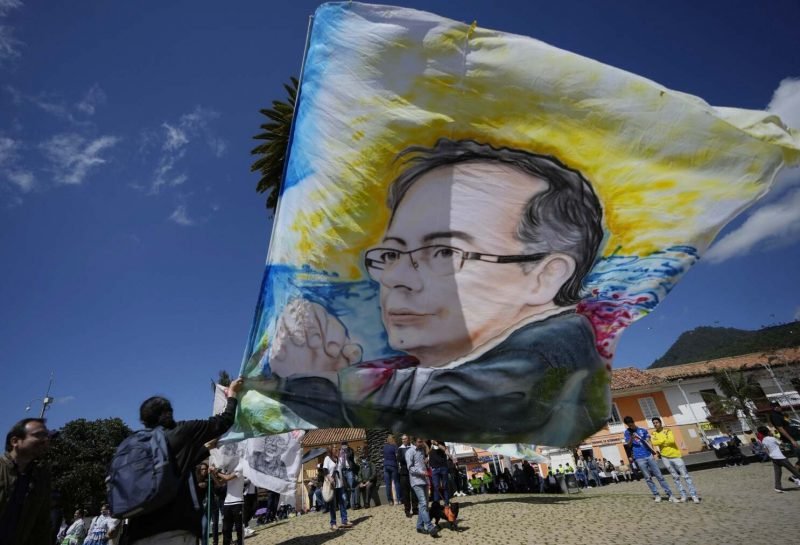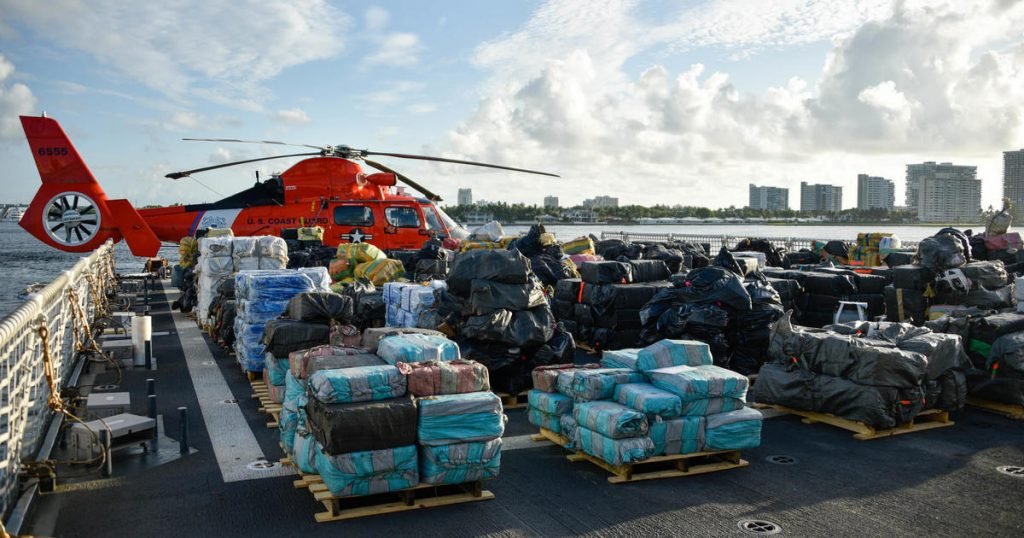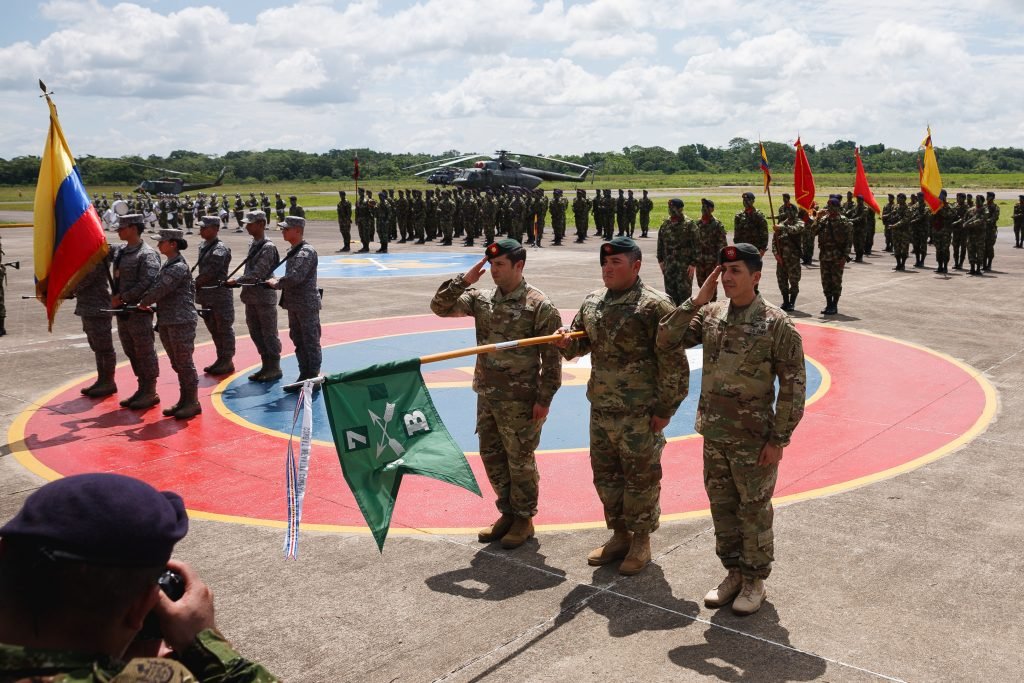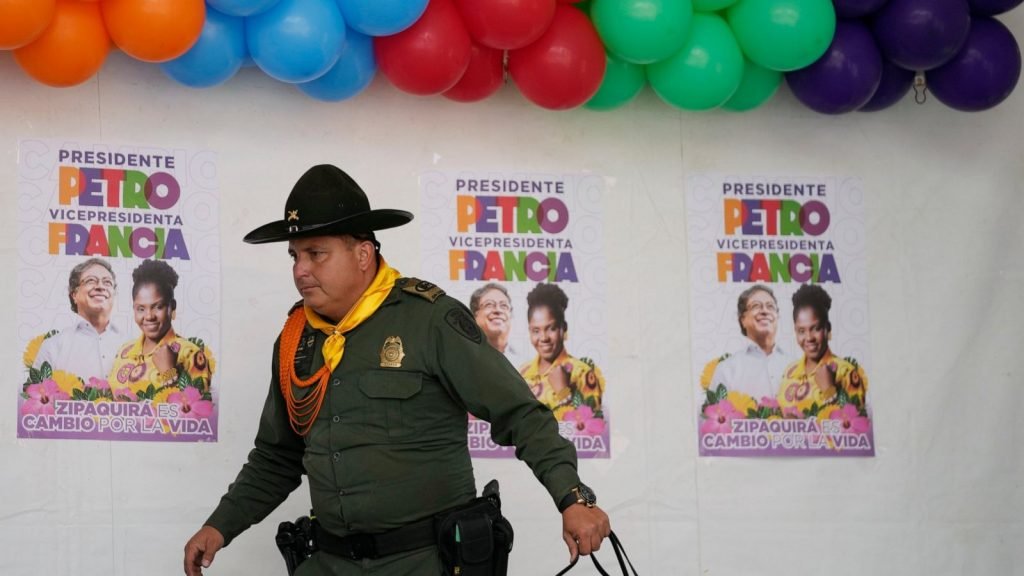Gustavo Petro’s win and the narco-state in Colombia

Mr Gustavo Petro had recently won the recently concluded Presidential Elections in Colombia. This is the first time, Colombia has a left-wing President. This victory is notable as Colombia is the strongest ally of the United States in Latin America, with this win, Colombia also joins the list of countries that has elected progressives in Latin America in the past few years. Mr Gustavo had promised a slew of social and economic changes during his election campaign, the most important of which was his promises, with respect to tackling the drug menace in Colombia. Mr Petro, a former member of the disbanded M19 guerilla group, was critical of the US “war on drugs” in Colombia, and also the extradition of people involved in the drug cartels in Colombia. The article seeks to look into the US war on drugs, previous anti-drug efforts by the government, How Petro has tried to combat the nexus between state and drug cartel in Colombia in the past and what Petro’s win could possibly mean for the Narco-State in Colombia.
US “War on Drugs”
US intervention in Colombia can be traced back to the time since the Independence of Colombia, much before the War on drugs. The United States War on drugs in Colombia must be seen in the context of its Cold war Geopolitical calculations. The priority of the United States in the post-war period was the containment of Communism in the context of the Truman doctrine. The United States intervened in the Colombian Election of 1953, which witnessed the execution of the Liberal Presidential candidate Jorge Eliecer Gaitan, and used the opportunity to install the military dictator General Rojas Pinilla and provided him with a loan of US $ 170 million in order to suppress armed resistance and peasant rebellion. The United States also entered into a mutual defense pact with Colombia in 1952 and also instituted a counter-insurgency training school in Colombia.

The Truman and Eisenhower administrations actively supported pro-US military dictators, who in turn would suppress workers’ and peasants’ movements by labelling them as Soviet-supported insurgencies, thereby maintaining American geopolitical interests in a country which was ravaged by political turmoil. The Cuban Revolution in 1959, heightened the “communist threat” in the region, leading to desperate measures by the United States. The Kennedy administration came up with “Alliance for Progress”, which was a change in the American approach towards the region, as the focus shifted from counter insurgency to economy and development. However, during the same time, the counter-insurgency assistance to Colombia increased substantially, strengthening bilateral military ties as part of US assistance to Colombia. All the reformist movements were accused of being part of the International communist movement, and there was a crackdown on not only the armed rebel groups but also the unarmed civil society. The more repressive counter-insurgency efforts manifested in the form of Plan Lazo, which was a counter-insurgency operation that lasted between 1962 and 1965, and aimed at suppressing the peasant movements in the south, as they were resisting the Pro US government. This led to the formation of the rebel group, the Revolutionary Armed Forces of Colombia(FARC).
It was only in the 1970’s, that the war on drugs began showing up in US Foreign Policy. The American efforts towards tackling communism in the region under the garb of “counter-insurgency” was given an anti-drug orientation under Nixon. This was to divert the attention at home, from the failure of the Vietnam War and a number of other domestic factors. Nixon declared an all-out offensive against drugs, describing drugs as America’s “public enemy no 1”. However, the war on drugs had little impact on US-Colombia relations as Cocaine, which is the major drug cultivated in Colombia was at the bottom of US priorities and the US focus was on Heroin and Marijuana. However, Nixon’s successor Carter, despite adopting a more tolerant approach towards drugs as compared to the previous administrations had shifted his focus to Cocaine and Marijuana and also named the then Colombian President Lopez Michelson as an important partner in the counter-narcotics efforts, in his Anti-drug speech in the Congress, in 1977. From the time of Carter, the counter-insurgency and counter-narcotics operations increasingly became synchronised, culminating in the Reagan administration which consolidated the War on drugs with American Cold War geopolitical objectives. This was in contrast to the Nixon administration, in which counter-insurgency and counter-narcotics operations had a separate and independent character. The Reagan administration combined its anti-communist efforts along with the War on drugs, by linking the left-wing insurgency groups to drug traffickers. Under Reagan, the counter-insurgency efforts were further strengthened, despite the ongoing peace process between the Government and FARC in 1984. The United States and Colombian military also jointly initiated operation Condor in 1986, which was used as a pretext to eliminate progressives and liberals in the country. The United States had made available more than US $50 billion in weapons and extended training to around 4800 Colombian personnel between 1984 and 1990, stifling the efforts toward any semblance of democracy in the country.
Reagan’s supply-side approach to tackling drugs was lopsided and did not take into account, other factors for drug cultivation such as rural poverty, economic crisis and institutional weakness. The focus was on suppression, as the suppression efforts constituted a major part of the drug control budgets. The counter-narcotics measures also failed to compensate or rehabilitate the farmers or had any provision for crop substitution. The “Fumigation” campaigns aimed at destroying Cocaine, Marijuana and Opium crops often led to the destruction of food crops too.
The War on drugs continued even in the post-cold war period in the form of programs such as “Plan Colombia” under President Clinton, as it served the purpose of legitimising US military spending in Colombia.

Plan Colombia
The counter-narcotics strategies adopted by the United States in Colombia proved to be counter-productive as it led to the strengthening of the drug cartels in Colombia such as the Cali and Medellin cartels. The Medellin cartel got weakened after the killing of its leader Pablo Escobar and its middlemen were captured or killed by the authorities. The Cali Cartel bosses were also apprehended soon after. The weakening of the Cali and Medellin Cartel led to a power vacuum which was soon occupied by smaller and fragmented groups, especially the rebel groups. FARC entered the business in a big way. In order to deal with this threat, the Colombian government had announced a joint US Colombia operation against drug trafficking known as “Plan Colombia”. The objective of Plan Colombia was to reduce the production and trafficking of illegal drugs by 50 percent within 6 years and also to improve the security situation by taking back the lands illegally possessed by rebel groups. The United States and Colombian governments had invested around 1.2 percent of Colombia’s GDP towards Plan Colombia between 2000 and 2008 according to a report by the Accountability Office of the US. However, the outcomes of this program were mixed, as the land under coca cultivation did not fall significantly until 2010. The major strategy adopted by the authorities since the beginning of Plan Colombia was aerial spraying of coca plantations with herbicides, a method which Petro has been critical of. This method had proved to be ineffective and also costly. It is ineffective, as the coca growers found out ways of protecting the crops from herbicide such as spraying molasses over the foliage of the coca plant which helps in resisting the penetration of herbicide into the plant and destroying it. Apart from these loopholes, it was also detrimental to the environment and human health as it led to deforestation, contamination of water sources, skin diseases and miscarriages. Moreover, there are studies that link these measures to lower citizen confidence in state institutions. Even though the aerial spraying campaigns were accompanied by manual eradication campaigns to a lesser extent, the government argued that Manual eradication was less feasible and had practical difficulties as FARC deployed land mines to protect the coca crops or the forces responsible for the manual eradication campaigns were attacked by the rebels.
The Colombian government had changed course during the presidentship of Alvaro Uribe in 2006 when Juan Manual Santos was the minister of defense. The focus shifted from Aerial spraying and Manual eradication toward dismantling the production and trafficking. The new strategy resulted in a cocaine supply decline by 50 percent. The interdiction strategy proved to be more effective than aerial spraying and manual eradication strategy, as the losses faced by the Drug cartels are much higher. Most of the value addition takes place during the cocaine development and trafficking stages, as the impact on the drug business is much higher when attacked during these stages than the early stages of production. However, on the flip side, the interdiction strategy led to the drug business being shifted to Mexico or Central America. According to a study, the supply side shock induced by the interdiction strategy in Colombia between 2006 and 2009 led to a sudden spike in violence in Mexico during the same period. Another strategy adopted by the Colombian authorities during this period was going behind the leaders of the cartels, despite several cartel leaders being arrested or executed, there was a rise in mob violence due to the power vacuum arising out of this,as people within the gang would be vying to fill the power gap or rival gangs might attempt to capture the market.
Another prominent feature of Plan Colombia was the provision of Alternate Livelihood programmes such as crop substitution programs. However, the effectiveness of these programs is questionable as they suffered from poor implementation. Those that were implemented also had several limitations, as the government assistance was limited to training and education of farmers, the government did not help the farmers in marketing their products, and farmers without the resources to market their products returned to coca cultivation.

Gustavo Petro and Colombia’s Establishment
This was the third time Mr Petro was running for the office of the President, and he was at loggerheads with Colombia’s Establishment in the past too. Mr Gustavo Petro had exposed the link between Colombian Politicians and drug traffickers. The first revelation came in 2005 when Petro had exposed links between his fellow senators and paramilitary death squads in the province of Sucre. His revelation led to the arrest of around 7 governors and 60 congressman, including the cousin of the then President Alvaro Uribe. The revelations demonstrated that the Colombian Political elite were hands in glove with the drug trafficking paramilitary, whom they claimed to oppose, for political and economic benefits. Later in 2007, Mr Petro’s allegations against then President Alvaro Uribe spurred investigations, that led to exposing the links between Uribe’s family and the Medellin cartel. The death squads that took over the Medellin cartel following Pablo Escobar’s death had links with Uribe’s family. Alarmed by the tainted human rights records and allegations of links with the drug cartels, foreign governments had also distanced themselves from Uribe’s government. However, Alvaro Uribe continues to wield political influence in Colombia.
Interestingly, Venezuelan President, Nicholas Maduro had alleged Petro’s immediate predecessor Ivan Duque of turning Colombia into a “ Narco state” during several occasions. He made these allegations amidst the increasing tensions between Venezuela and Colombia. According to Maduro, Colombia is responsible for 70 percent of Cocaine produced in the world, citing UN and US government reports as evidence. He also claimed, Venezuela is a victim of 8 percent of Colombia’s drug trafficking. Maduro, during several instances, had alleged the Ivan Duque government of aiding drug trafficking in order to create instability in Venezuela.
Now it is clear, why Mr Gustavo Petro is critical of the US-led “war on terror” campaign and also previous counter-narcotics measures by the government as they proved to be counterproductive and had limited success. Mr Petro has also criticised the extradition process, which involves taking the cartel leaders to the United States for trial, as he wants the cartel leaders to confess to their victims before extradition. According to Petro, taking the drug traffickers to the US will prevent the names of the political elite, with whom the traffickers may be associated with, from coming out, and also impedes further investigations.
Mr Petro seeks to adopt an alternative approach to anti-narcotics efforts, by focusing more on crop substitution and alternate livelihood programs, such as promoting legal marijuana, rather than outright suppression. He is also keen on implementing the 2016 peace deal with FARC, Mr Petro might find common ground with the United States administration on this issue. He also seeks to repair Colombia’s relations with Venezuela. However, several experts opine that a radical turn in the approach towards anti-drug efforts might limit anti-drug funding from the United States, which might prove to be a challenge for the newly inducted Government. The effectiveness of Mr Petro’s proposals and how he chooses to deal with these challenges needs to be seen.



















